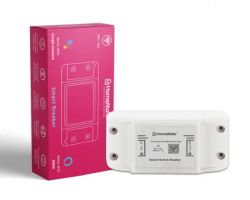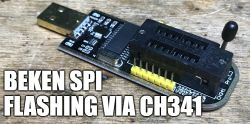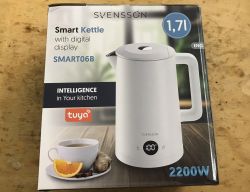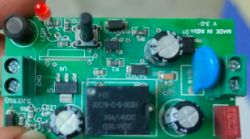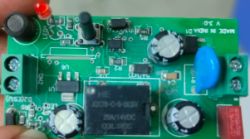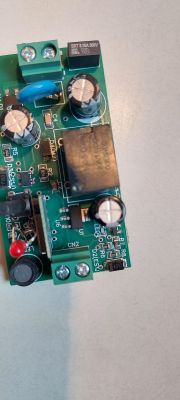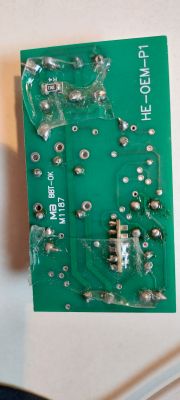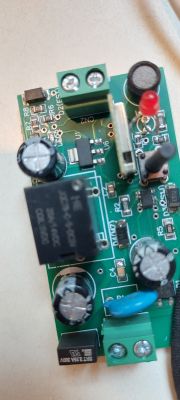FAQ
TL;DR: Cloudcutter failing? Flash CB2S by wire using 3.3V logic; "5V would damage CB2S." Use a USB‑UART and BK7231GUIFlashTool. [Elektroda, p.kaczmarek2, post #20791747]
Why it matters: This FAQ helps Homemate breaker owners recover from failed Tuna Cloudcutter attempts and safely flash CB2S modules without damage.
Quick Facts
- Confirmed module: Tuya CB2S inside the Homemate smart breaker. [Elektroda, ciknururko, post #20791719]
- OTA works only when a matching Cloudcutter profile exists; otherwise the exploit fails. [Elektroda, p.kaczmarek2, post #20792062]
- Preferred wired tool: BK7231GUIFlashTool for BK7231/Tuya modules. [Elektroda, p.kaczmarek2, post #20783195]
- Power the CB2S at 3.3V; 5V can permanently damage it. Use a stable supply. [Elektroda, p.kaczmarek2, post #20791747]
- NodeMCU/Arduino can act as a USB‑TTL adapter if you hold the MCU in RESET. [Elektroda, p.kaczmarek2, post #20791758]
How do I fix “The profile you selected did not result in a successful exploit” with Tuna Cloudcutter?
That message means there isn’t a matching Cloudcutter profile for your device/firmware. Check the devices list and filter by Type → Cloudcutter. If you can’t find a working match, switch to wired flashing, which the maintainer recommends as faster. [Elektroda, p.kaczmarek2, post #20792062]
Which Cloudcutter profile should I try for the Homemate breaker?
There’s no exact rule. Try profiles from similar Tuya devices until one works. If none succeeds, use the wired method. The device is easy to open, and pads are accessible, so a wired flash is practical even for first‑timers. [Elektroda, p.kaczmarek2, post #20783147]
Is OTA flashing possible on this CB2S device?
Yes, but only if a matching Cloudcutter profile exists for your exact firmware. If no profile matches, OTA will fail, and you should flash by wires instead. The profiles list is the authoritative place to check before attempting OTA again. [Elektroda, p.kaczmarek2, post #20792062]
What voltage and adapter do I need for wired flashing?
Use a USB‑to‑UART adapter and a stable 3.3V power source. Do not use 5V on CB2S. As the expert noted, “5V would damage CB2S.” Many generic USB‑UART adapters work fine when powered correctly at 3.3V. [Elektroda, p.kaczmarek2, post #20791747]
Can I use a NodeMCU or Arduino as a USB‑TTL adapter?
Yes. Put the board’s MCU into RESET so the USB‑serial bridge is free, then wire RX, TX, GND, and 3.3V to CB2S. As advised, “Just put the MCU into RESET state.” This is a cost‑effective alternative to a dedicated adapter. [Elektroda, p.kaczmarek2, post #20791758]
How do I wire‑flash the CB2S quickly?
Follow this 3‑step snippet:
- Hold the host MCU in RESET by shorting RESET to GND.
- Connect USB‑UART RX↔TX, TX↔RX, plus 3.3V and GND to CB2S.
- Start the flash, then power‑cycle 3.3V once to let CB2S take the bus.
[Elektroda, p.kaczmarek2, post #20791954]
Do I need to remove capacitors or other parts on RX/TX lines?
No. You usually don’t need to remove capacitors or other elements on RX/TX for flashing. They are not used in this process. This makes the wired approach simpler than older tutorials might suggest. [Elektroda, p.kaczmarek2, post #20783989]
Do I have to desolder the CB2S module to flash it?
Not required, but it’s an option. You can desolder the module and flash it outside the circuit, as shown in the referenced guide. Many users succeed in‑circuit, so desoldering is only for tricky cases. [Elektroda, p.kaczmarek2, post #20791701]
What flashing software do you recommend for BK7231/CB2S?
Use the BK7231GUIFlashTool from OpenSHWProjects. The maintainer now prefers this tool for BK7231‑based modules over older methods and links to it directly. [Elektroda, p.kaczmarek2, post #20783195]
It still won’t connect—what should I check?
First, swap RX and TX; a reversed pair blocks communication. Then power‑cycle the 3.3V line to release the bus and retry. Ensure the host MCU is held in RESET during the flash attempt. These two checks fix most connection failures. [Elektroda, p.kaczmarek2, post #20791954]
Which Wi‑Fi module is inside the Homemate smart breaker?
The unit shown in the thread uses a Tuya CB2S module. Knowing this helps you pick the correct pinout and flash tool settings for BK7231‑based hardware. [Elektroda, ciknururko, post #20791719]
I’ve never soldered—can I still do the wired method safely?
Yes. The device is easy to open, and the pads are accessible. The moderator even offered step‑by‑step guidance. Use low heat, fine tips, and practice on scrap first for confidence. Wired flashing remains the most reliable route here. [Elektroda, p.kaczmarek2, post #20783147]
